We have to admit – we flashed through Slovakia and Hungary as if our bikes had wings. We’ve been there many times before and didn’t plan a long sightseeing tour this time. We wanted to go a little south to catch a warmer temperature and the last rays of summer.
So we rushed through side roads, stopping only for very important reasons – as for random rainbow photography.
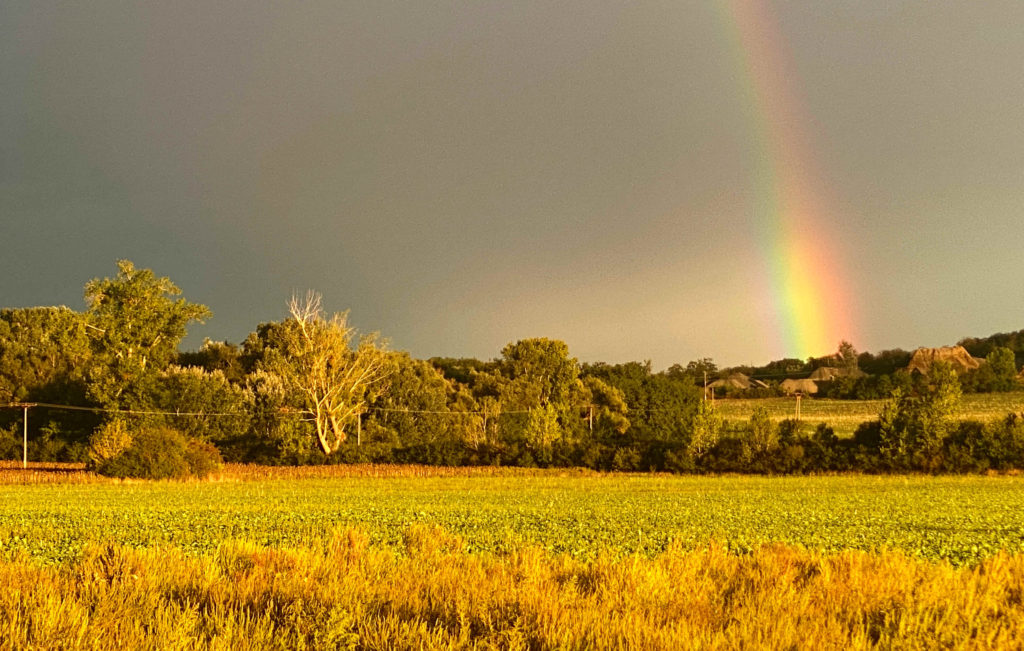
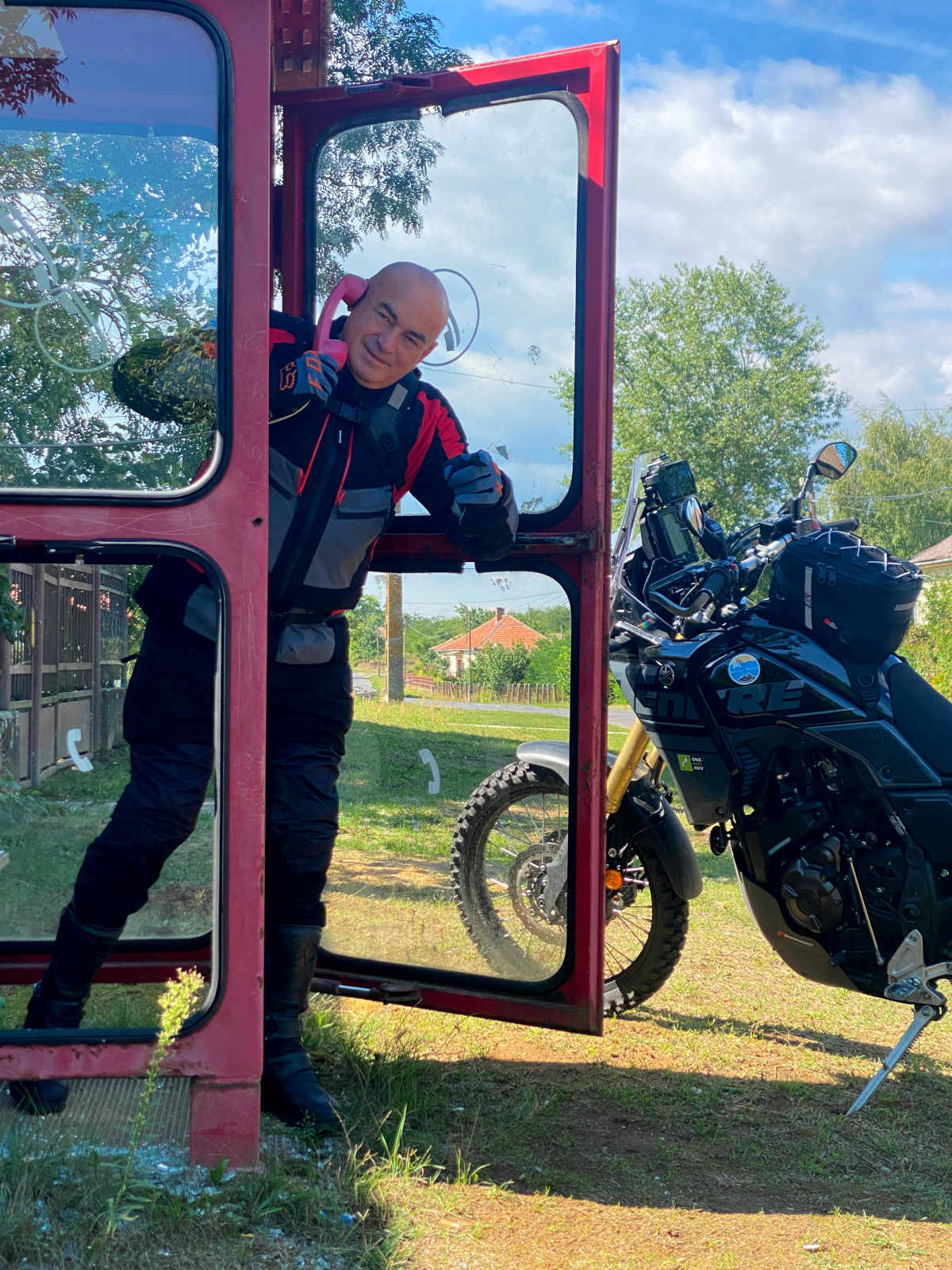
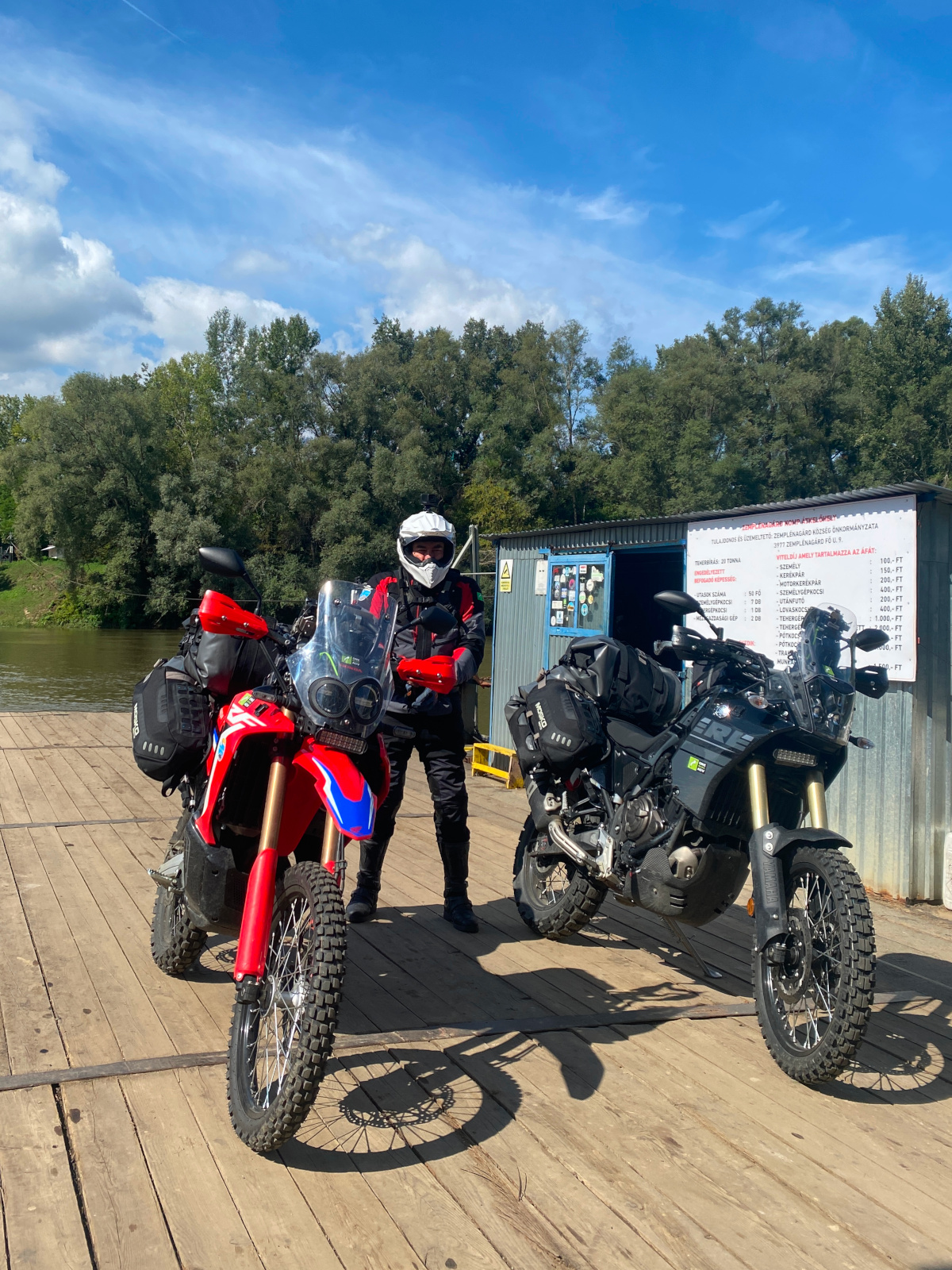
The first stop we had at the Săpânța Merry Cemetery.
Săpânța

If there is anything to be said about this cemetery, something that goes beyond banal delights – it would be – that it is an uplifting place. Hundreds of exquisitely decorated blue crosses adorn the tombs and the whole ambience reveals a place that is eagerly visited by the living beings.
On each cross, in the upper part, there is painted bas-relief showing a simplified image of the deceased in a typical life situation. There is a tractor driver, teacher, seamstress, banker and policeman. Probably the entire system of professional roles necessary for high functioning community could be recreated here.
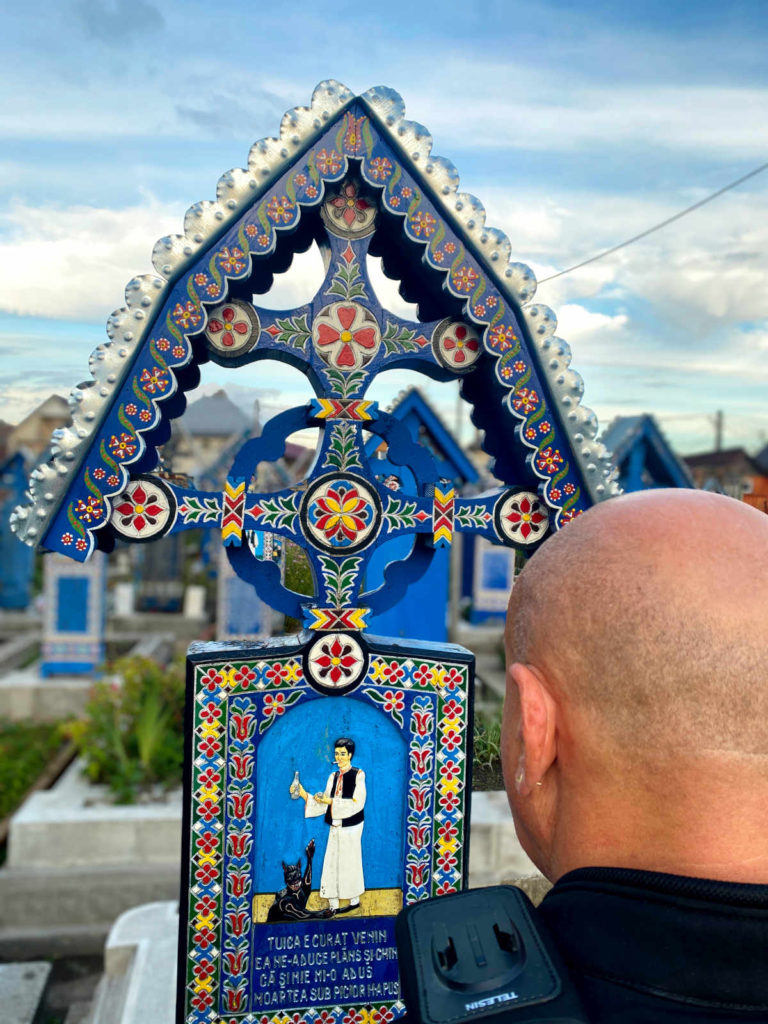

There is an epitaph just below the painting – it describes who the deceased person was and how he lived. The narrative is light, funny, satirical – devoid of the pathos typical of Christianity.
The originator and founder of this place and the creator of most of the tombstones was the local carpenter Stan Joan Patras, who for several decades produced and carved tombstone crosses.
The light approach to death – assuming it’s rather a “rite of passage”, not the end and not the beginning – most likely derives from the Dacas’ neo-pagan beliefs of the Zalmoxian movement. Aesthetics follows this: the colors are therefore festive, and the ornamental motifs of pigeons and flowers are associated more with the richness of life than with the final passing of the soul.

And had it not been for the late hour we arrived, we could have spent many hours here trying to decode life values from these tombstones.
Maramures
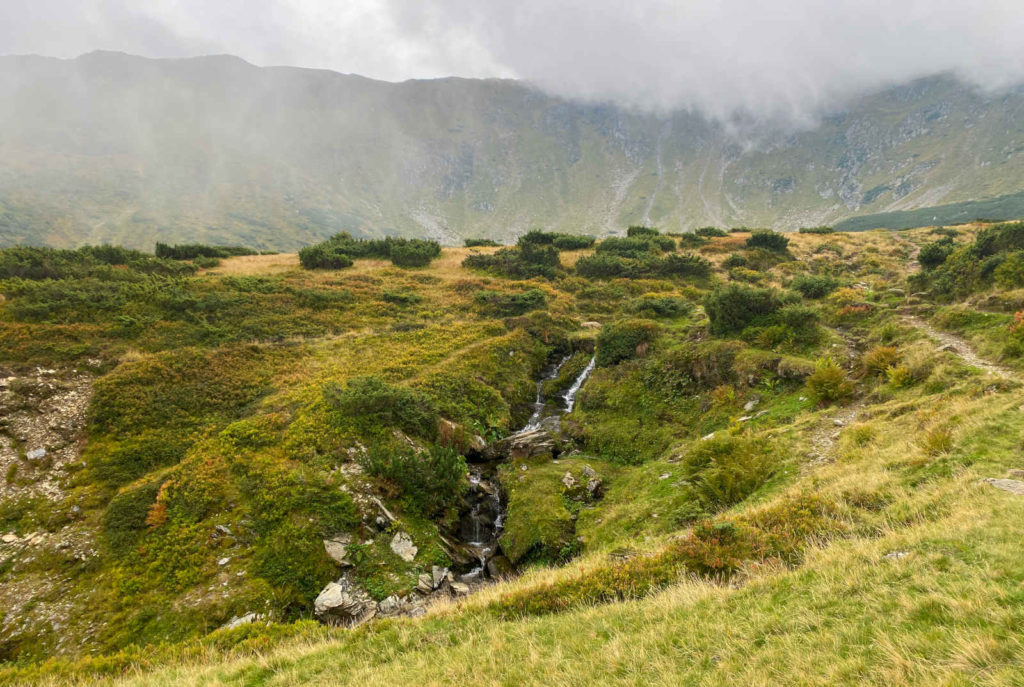
Through hills, valleys and countless serpentines, we came to Borșa – a resort in northern Romania. Delighted by nature that flashed along the way, we decided to go to the mountains.


It is indeed strange feeling – hiking the ladscape one day and watching unhurriedly wide meadows, listening to the wind rustling between the grasses, following the movements of the clouds, being caught by the rains and going down in the darkness. The next one, come to the same places by motorcycle and see more of the place, less precisely and from a different perspective.
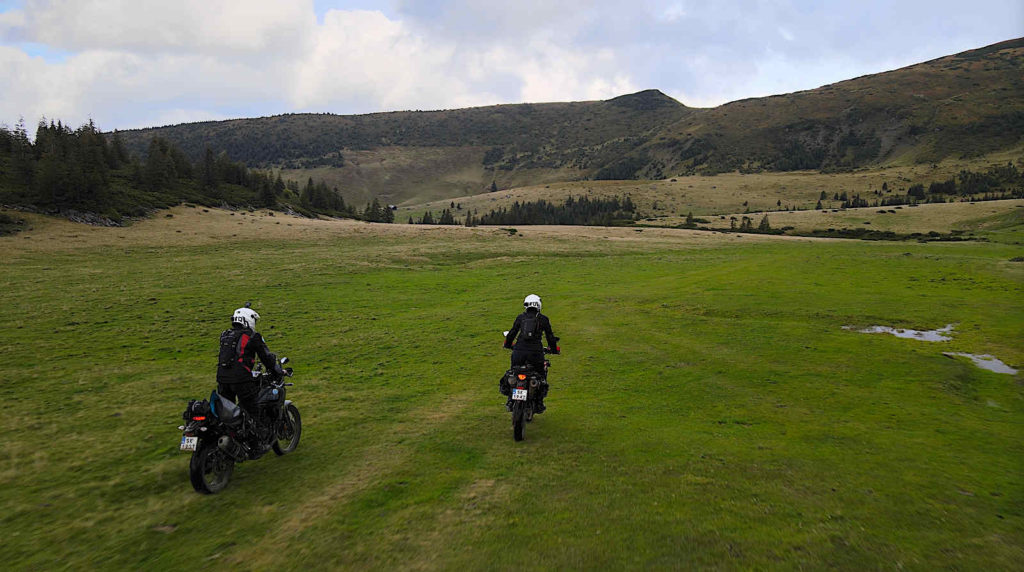
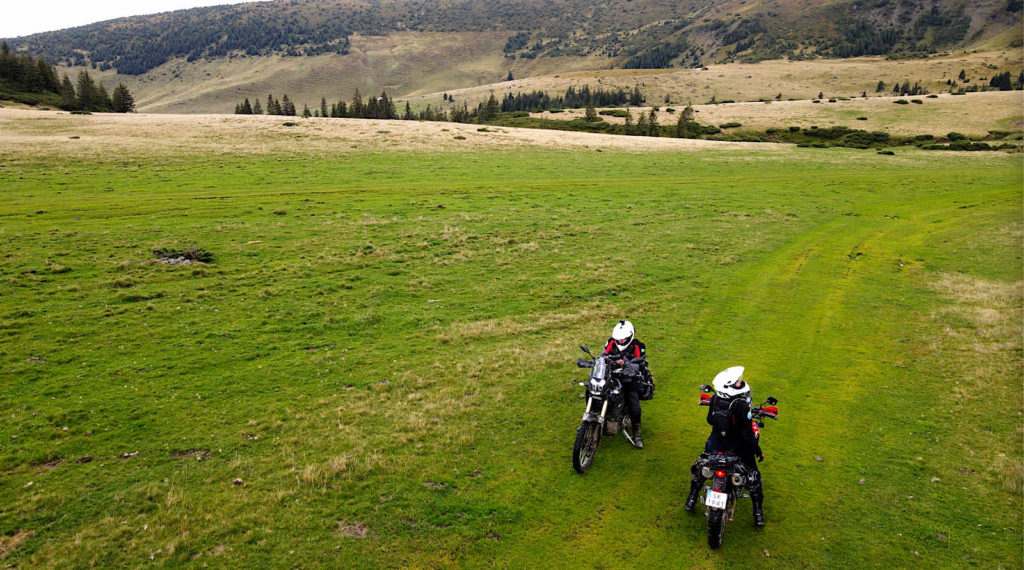
Anyway – the Rodnei Mountains National Park is unbelievably beautiful, the trails are epic, although rather poorly marked. For sure, both riders and hikers can enjoy them – cause everything is allowed in this region with respect for nature – riding and camping. In the Borșa tourist complex, new cableway and slopes are prepared for the season. Soon it will also be a perfect place for skiing and snowboarding.
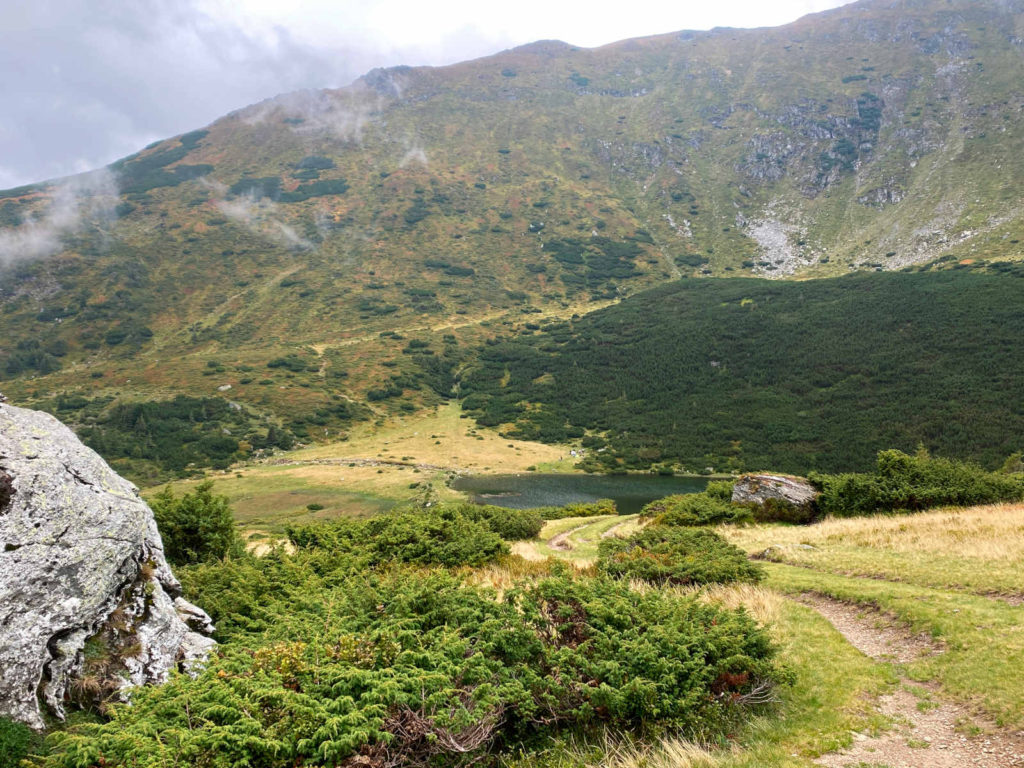
We’ll be back here for sure!
Ciocănești
From Borșa we headed to Bukovina. Here we wanted to see a touristy classics – the Moldovita and Sucevita monasteries. But on the way we came across a village that one modest housewife turned into a folk jewel.
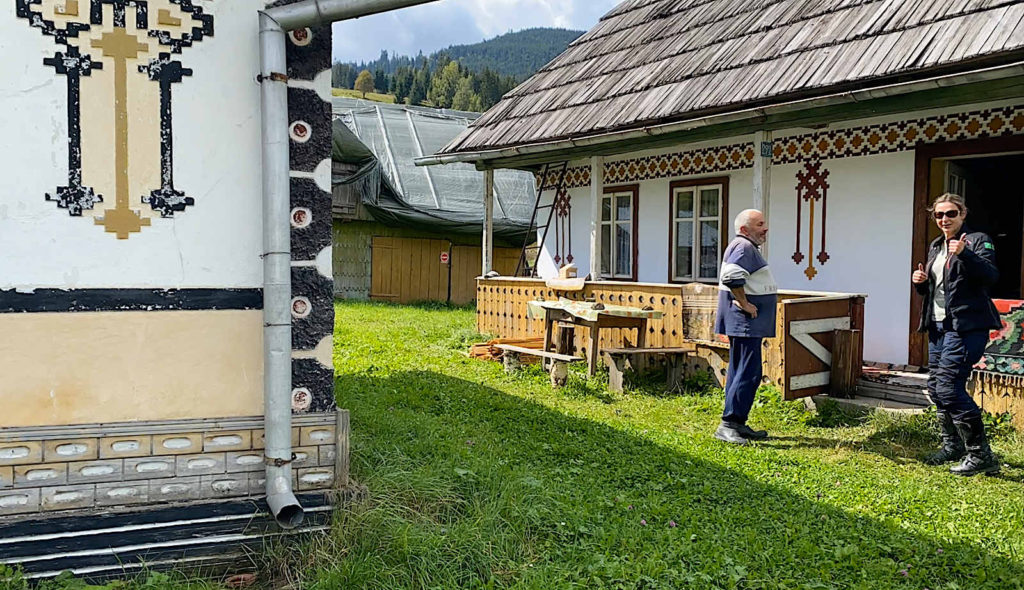
Matusza Leontina, Matusza Leontina – repeated the chap with a few gold teeth at each side of his smile, when he invited us with a broad gesture inside a slightly dilapidated two-room hut. Inside, there was a real ornamental orgy. Each relatively flat fragment of reality has been painted, embroidered or knitted.
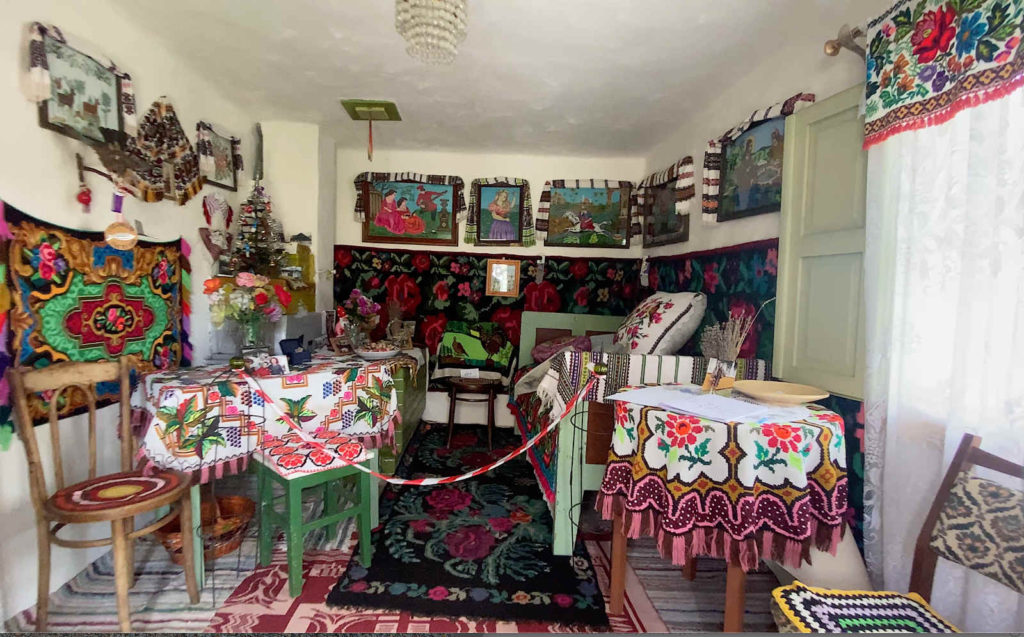
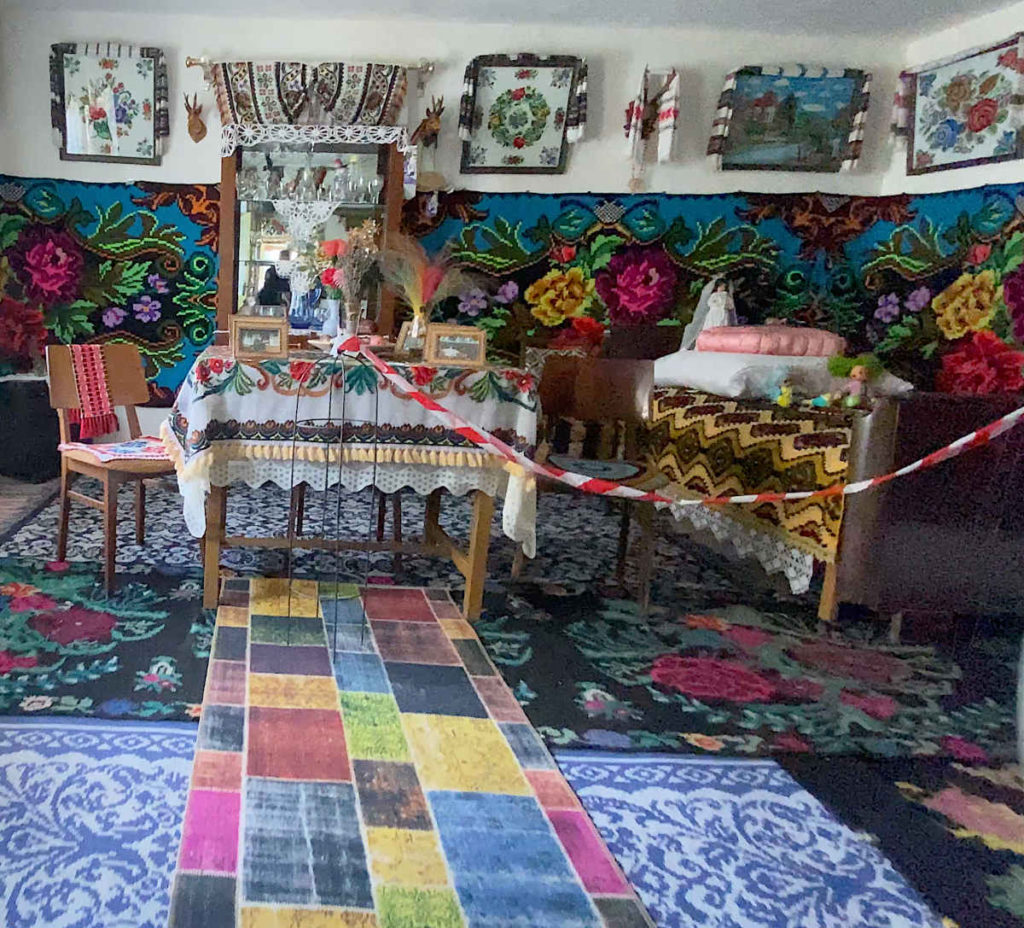
We couldn’t resist the impression that these patterns and borders, applications, inlays, emblems filled this space completely, poured out through the windows and settled on the walls of the surrounding houses. And then they captivated the hearts of the inhabitants of the village and took over the entire neighborhood.
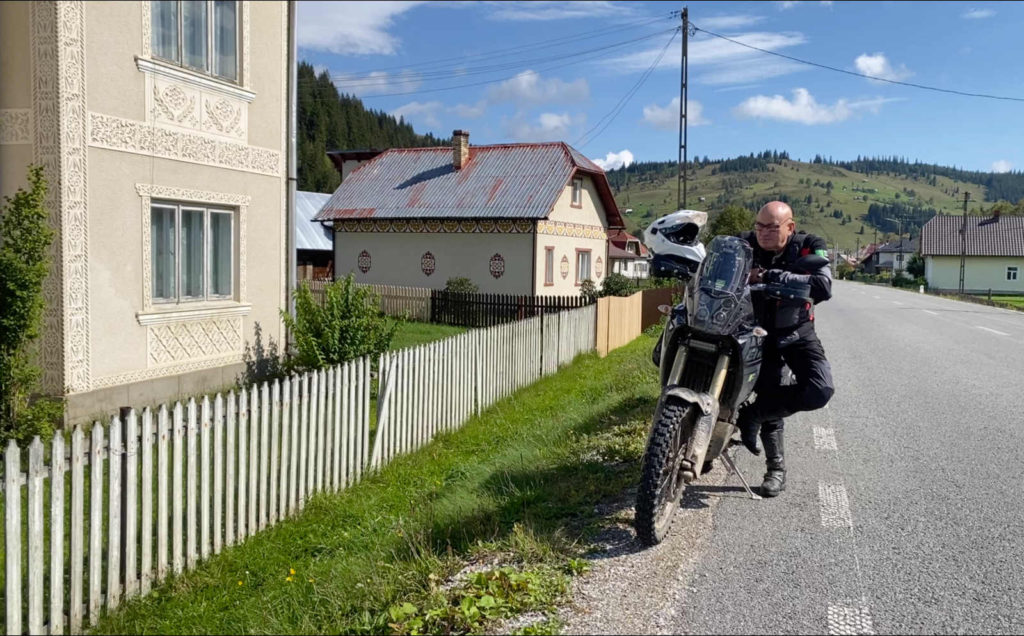
We learned that in the 1950s, Leontina Taran – a housewife in love with the art of decorating, wanted to ornate her home with ethnic motifs known from Easter eggs and folk costumes of the region. So she asked a village craftsman – bricklayer Dumitru Tomoioaga for help. He decorated her modest hut with ethnic patterns. Applying intricate strips to the outer walls was not easy at all – it required plastering, carving in plaster and then painting.


The new clothes of Leontina’s house were admired so much that soon the house was opened to the public. There were also some followers of the idea in the area. Some time later, the son of a bricklayer, Dumitru, took the office of the mayor of Ciocănești and legally regulated the obligation to decorate the houses from the outside with folk motifs. The order is in force for all new and renovated facilities.
The village became an open-air museum and it is worth stopping here for 2-3 hours to feel the unique ambience of this place.
So this is the official version of the origin of house decorating between the Maramures and Bukovina regions. We do not know if there is truth in that, but the fact is – when riding through this region you will see a lot of houses embellished with patterns – right at the main road.
Bineeee!
Over the last few weeks, there have been many places worth our memories and worth at least notable mention. But the story we have to reveal and highlight is the one about 3 days spent with strangers. Strangers who turned out to be friends and family at first sight.
We descended from the mountains, wet and freezing, expecting only a little comfort and rest. And they welcomed us as if they had only been waiting for us for a long time and as if we were the most important people in the world. We were given a home, warm food, a palinka and genuine joy that we had come to them.
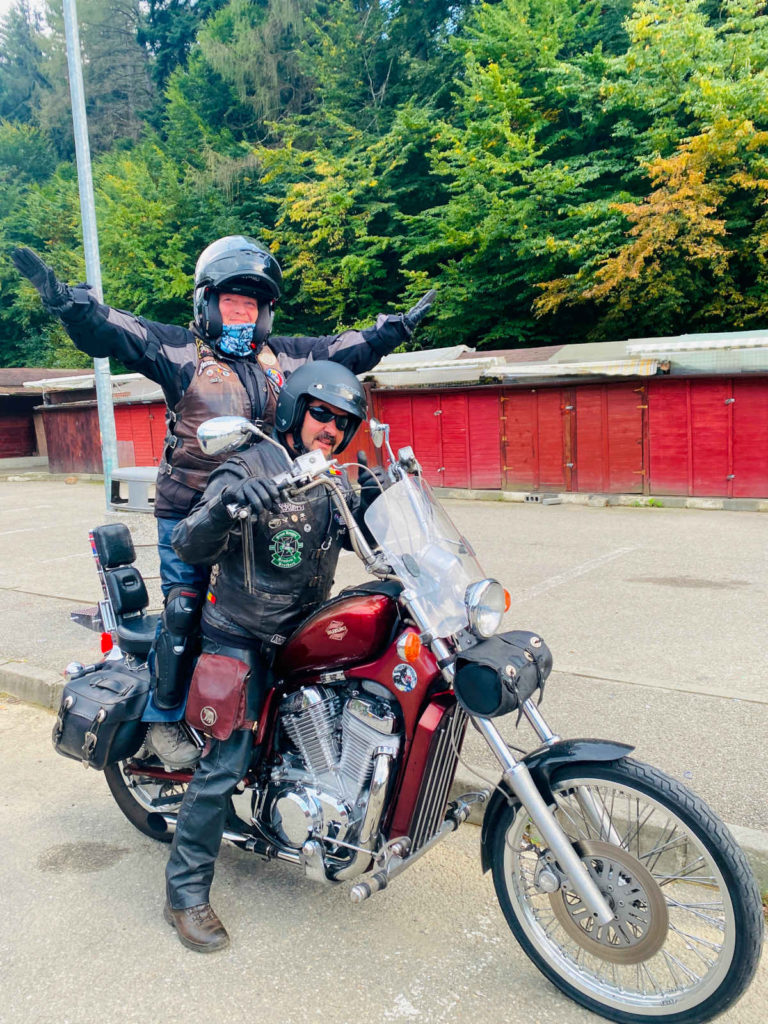
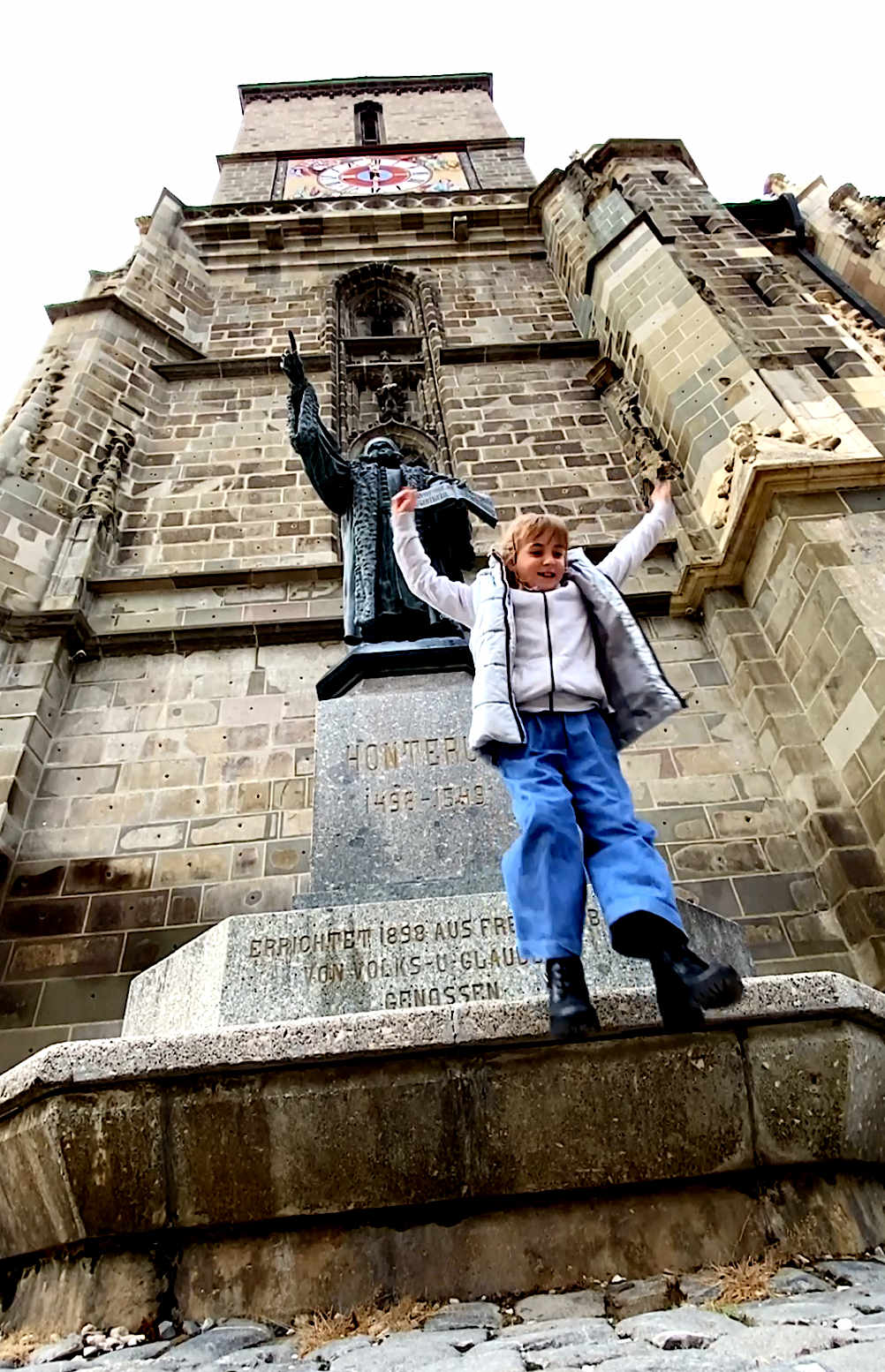
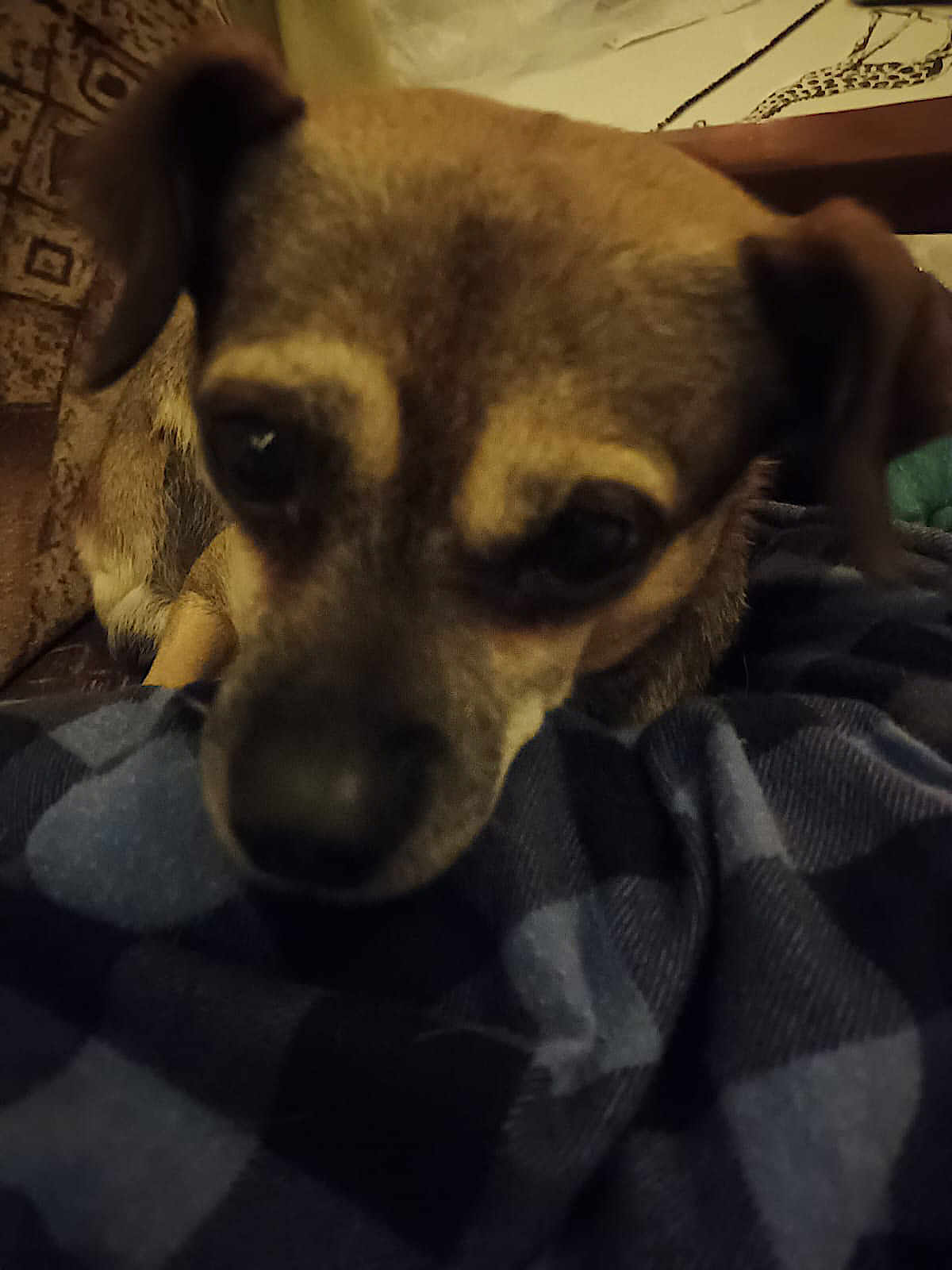
Meet Dani, Simona and Sorina – a family that mastered the art of giving. And the three-legged Norocell dog – they saved it from the accident. It became faithful and charming companion on their life journey.
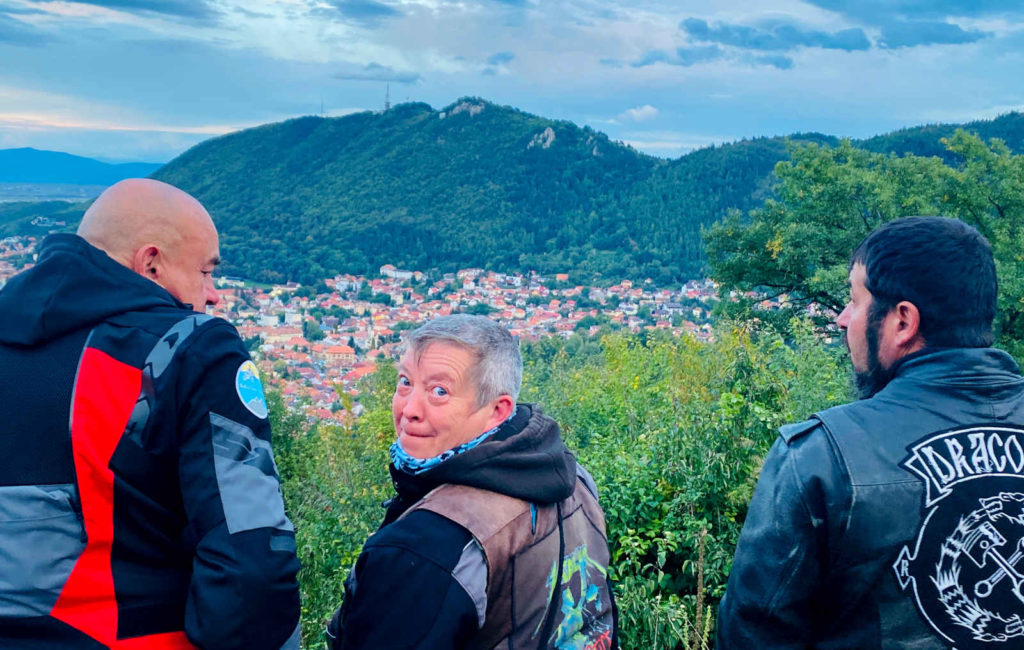
Lady Metallica – that’s what we used to call Simona – the captain of everyday life. It was her who prepared the sightseeing route for us the next day. It was she who bought a great motorcycle a few years ago as a birthday present for Dani. And for all the efforts he repays her by making sure that she is always safe + comfortable and not only when riding with him. Despite many health inconveniences, Simona is constantly smiling and this affects the people around her a lot.
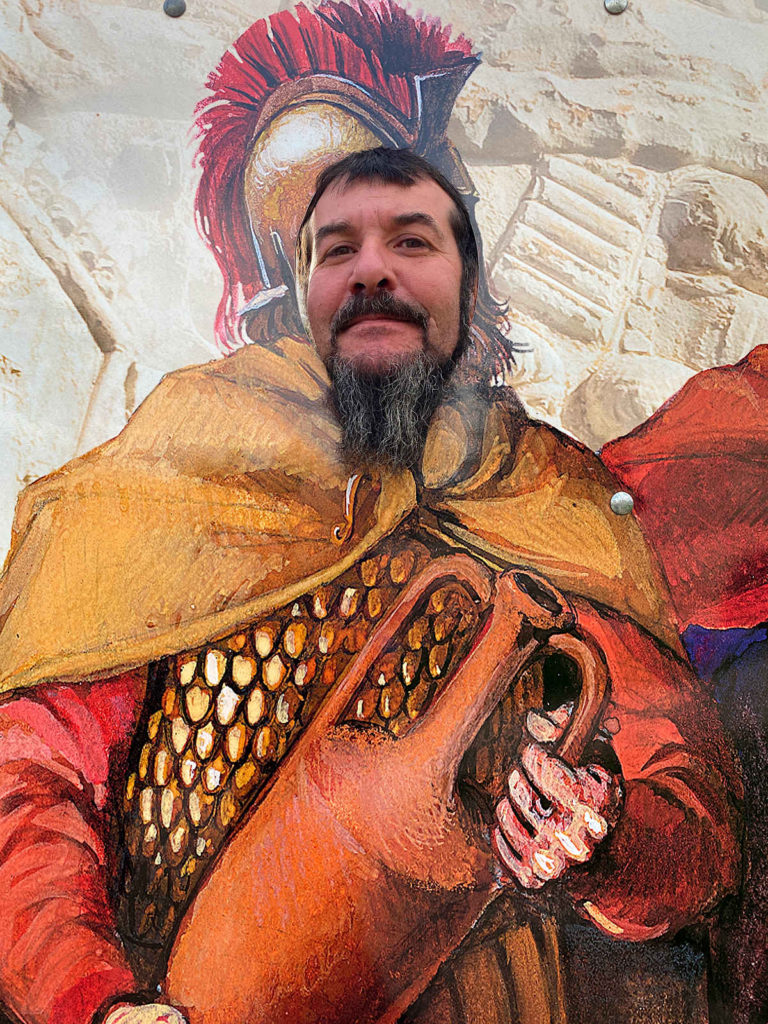
Here is Dani – a motorcyclist by vocation, and vice president of Dracon’s Riders motorcycle club. Mostly a silent but ultra-careful observer. He showed us around the attractions and thanks to him we were able to efficiently repair unstable electrical installation in Honda. Thanks to him, the bread magically appeared in the kitchen cupboard and everything we could need was always at hand!
Well, and Sorina? She’s ray of light. Beloved granddaughter, sunshine and hope. Vivid silver as Polish people say. She makes sure that Simona and Dani are smiling every day.
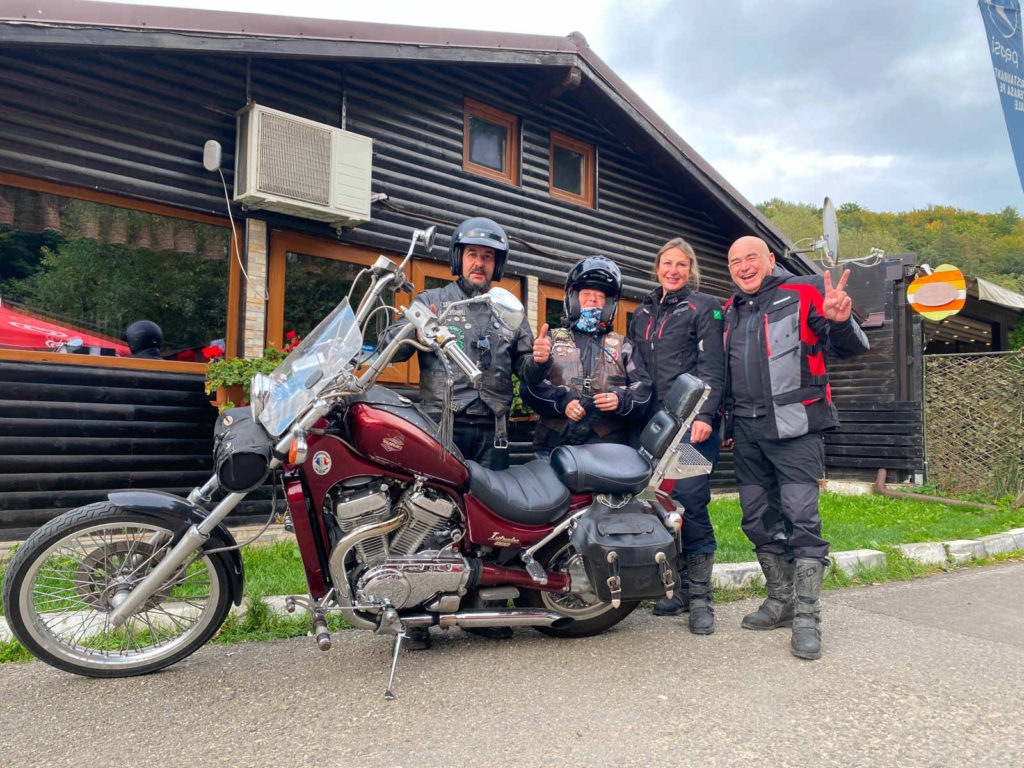
Together with Dani, Simona and Sorina, we visited the gems of the area: Bran Castle, Rasnov Fortress and the Black Church in Brasov. And despite the fact that our riding style and lifestyle, as well as the spectrum of “problemas” are radically different – we lived these few days as a family.


The time together flew away and we came to the end of our Romanian rhapsody. There is Romanian-Bulgarian Bridge of Friendship in short perspective :).
What kind of experiences awaits us in Bulgaria? Soon we will see!

Wonferful. It’s awesome.